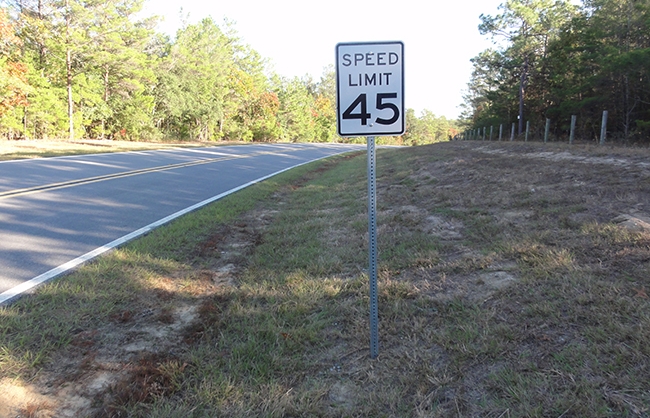Location
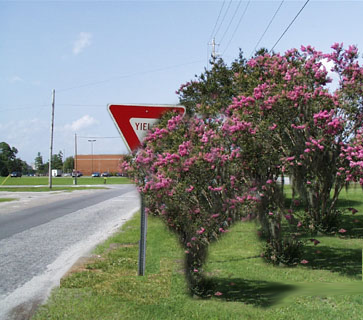
While differences in design and alignment of roadways may prevent complete uniformity in sign position, the location of sign installations should be carefully selected for clarity and visibility to motorists. A qualified engineer should determine the best location for a sign.
General Installation Guidelines
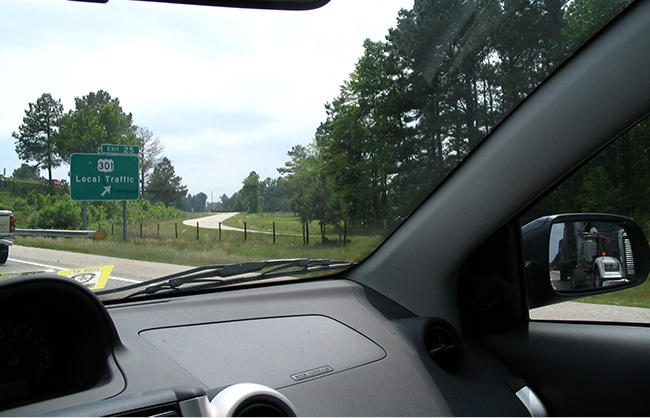
Signs should be placed where they will not be obscured by other signs, parked cars, or vegetation.
Additionally, assuming the sign is located within the roadway clear zone, it should be mounted on a yielding support and also located on the right-hand side of the road where drivers are accustomed to looking. Signs in other locations should be considered only as supplementary to signs in the normal locations, except as otherwise provided in the MUTCD. Example signs include ONE WAY, DO NOT ENTER, and NO LEFT TURN signs.
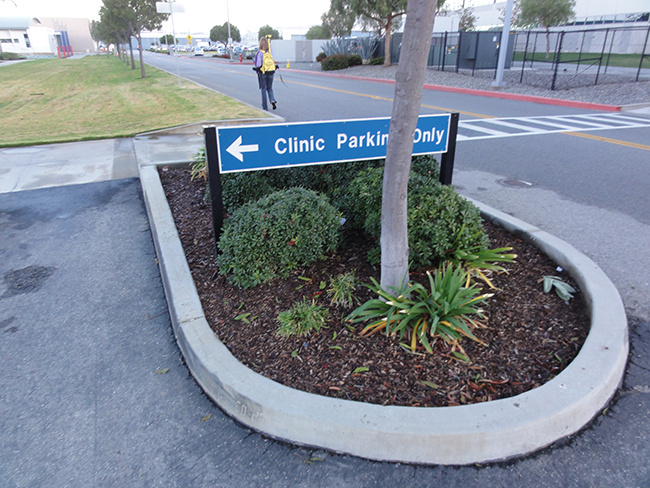
Signs should be placed where they will not interfere with the motorist's line of vision. Signs should not be mounted in road dips, behind hill crests, or where a motorist might come upon them suddenly with insufficient time for perception and reaction.
Signs should be individually mounted on seperate posts; unless one sign supplements another, they are guide signs that are grouped to clarify information to motorists, they are regulatory signs that do not conflict with each other, or street name signs posted with a STOP or YIELD sign. Signs mounted individually are easier to read than grouped signs. A sign that is mounted back-to-back with a STOP or YIELD sign should stay within the edges of the sign. If necessary, the size of the STOP or YIELD sign should be increased so that any other sign installed back-to-back remains within the edges of the STOP or YIELD sign.
Breakaway Sign Posts
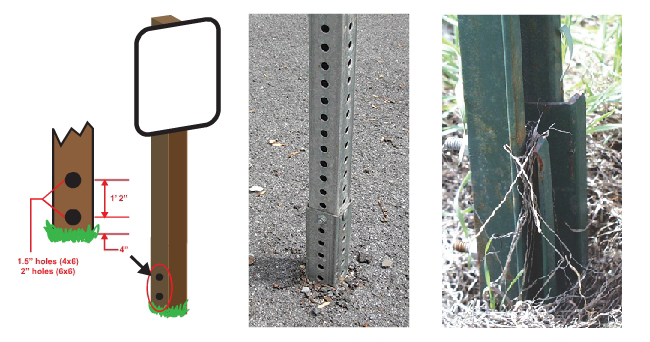
The type of sign post selected must present minimum hazard to the motorist. A breakaway or yielding design, as approved by the Federal Highway Administration, is recommended. Rigid sign supports may be used when the sign is erected behind a rigid guardrail or concrete barrier. A good source of reference is the local state Department of Transportation (DOT). Most state DOTs have sign post standards, as well as standards regarding the number of posts to utilize based on sign panel size.
Special Location Conditions
Placing signs on alternative supports such as those used for traffic signals and street lights is permitted; however, the correct location and placement of signs should not be compromised due to the convenience of utilizing existing or shared supports.
Lateral and Height Clearance Installation Guidelines
Signs should be placed where they will not obstruct pedestrian and traffic flow. In built-up urban areas where parking or pedestrian movements are likely, signs should be mounted at least 7 feet above the top of the curb as measured to the bottom of the sign panel.
In rural areas, signs should be mounted at least 5 feet above the near pavement edge, measured from the bottom of the sign. This also applies to built-up areas where parking or pedestrians are unlikely.
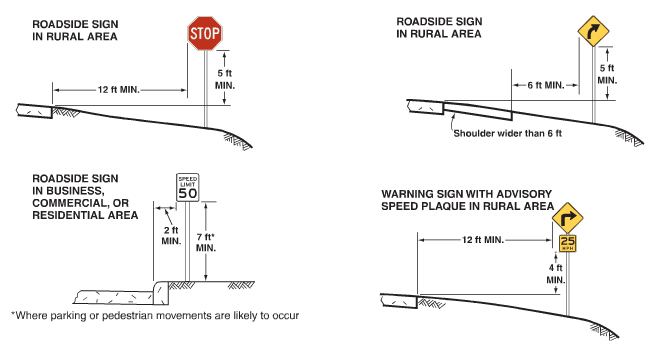
For the safety of a motorist who may leave the roadway, signs should be mounted to provide the maximum allowable lateral clearance from the edge of the travel lane, which is dependent upon the priority of the sign's message. In rural areas where road shoulders may be narrow, signs should be placed behind drainage ditches to make the shoulder safely available to vehicles, and to facilitate roadway maintenance. A 12-foot minimum offset distance is recommended.
The lateral placement for all signs may be reduced to the minimums when necessary to fit field conditions or to improve sight distance. For example, in rural areas, a six-foot minimum is allowable from the road edge to the nearest edge of the sign. In urban areas where curbs are present, a two-foot minimum is acceptable (as measured from teh face of the curb).
